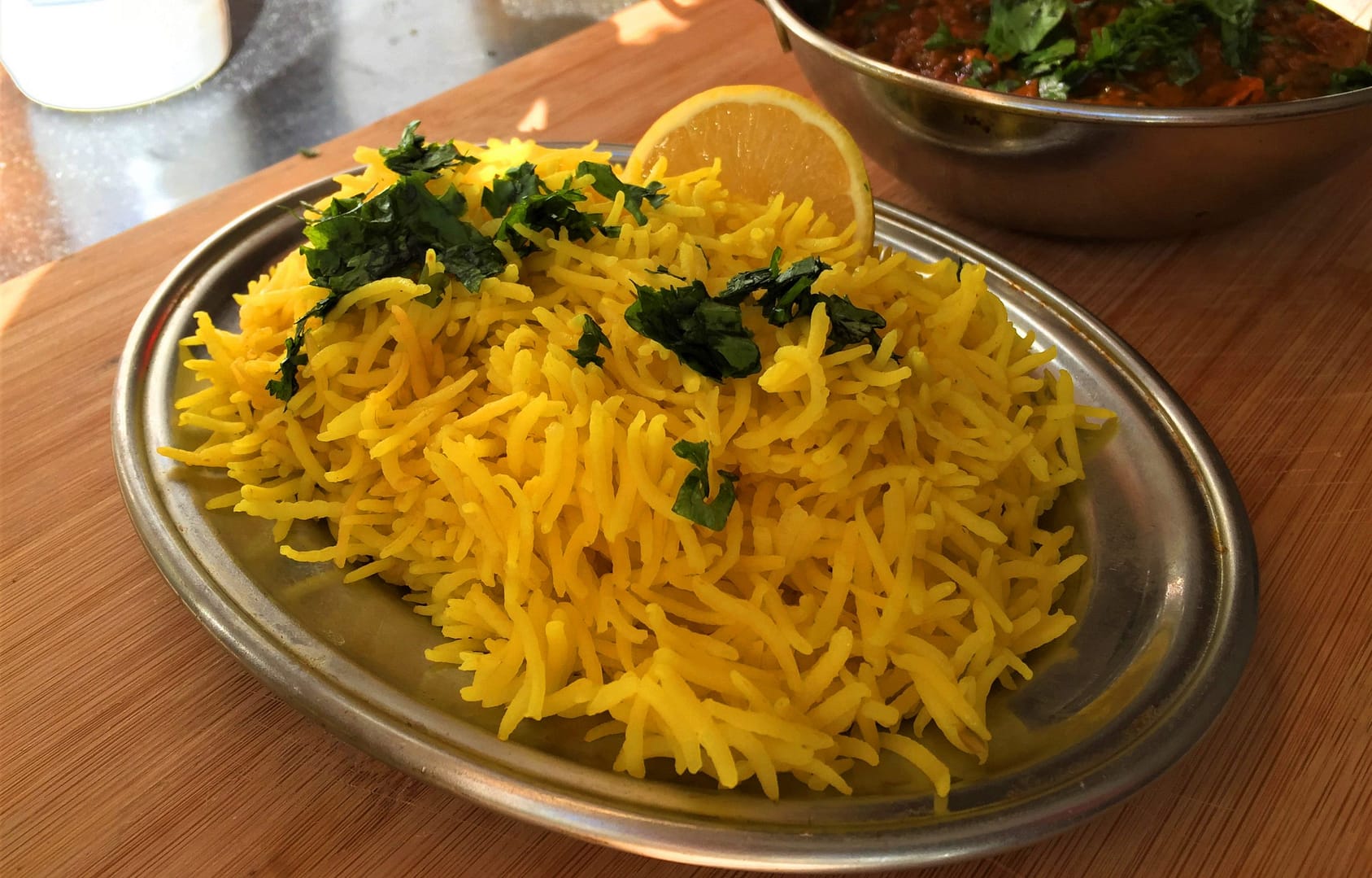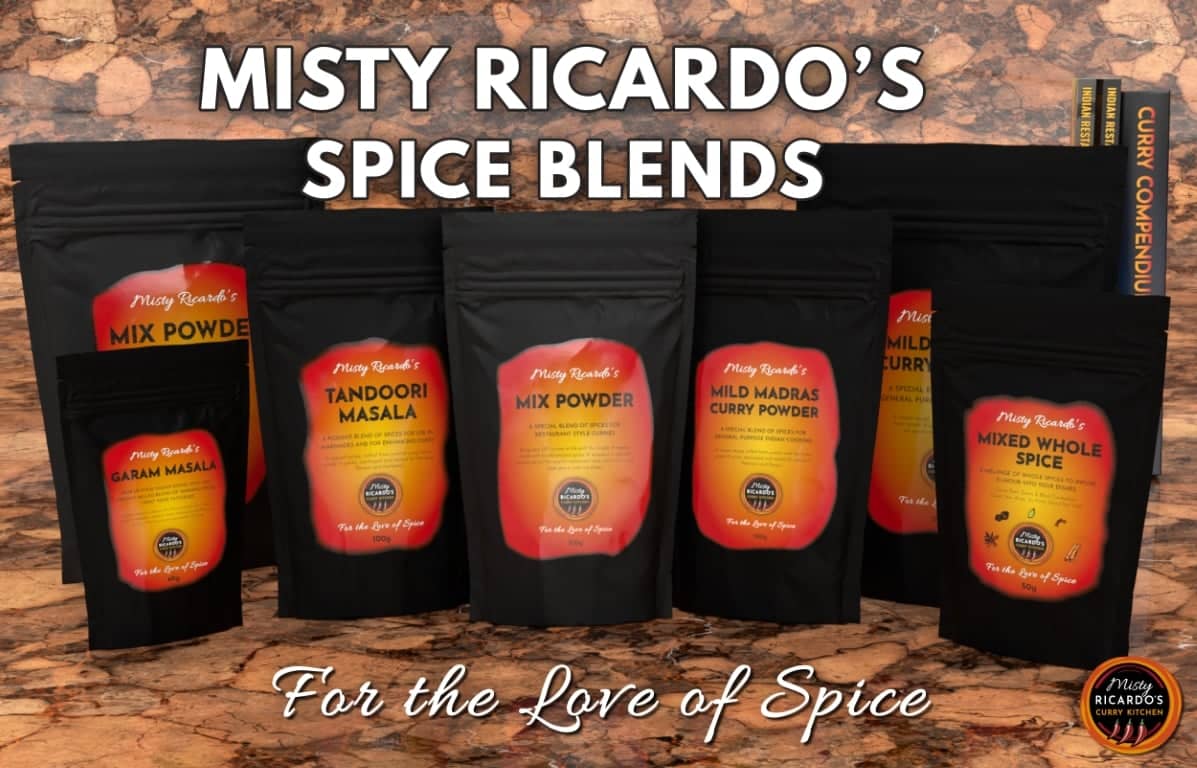Unsurprisingly, pilau rice is the go-to staple to accompany curry. When properly prepared and cooked the grains of basmati are nicely elongated and separate easily from each other. This recipe uses the excess water method, and is delicately flavoured with various whole garam masala spices.
This recipe makes four decent-sized portions, although the quantities can be adjusted to make whatever quantity is required.
This delicious recipe is one of the many in Indian Restaurant Curry at Home Volume 1.
INGREDIENTS
- 300g Basmati Rice
- Simmering Ingredients:
- 1 TBSP Vegetable Ghee or Oil
- 1 tsp Salt
- 1½ tsp Lemon Juice
- 1–2 Bay Leaves (Tej Patta Asian variety preferable)
- 10cm Cassia Bark
- 2 Cloves
- 3 Green Cardamom Pods, split open
- 1 tsp Fennel Seeds (optional)
- 1½ tsp Turmeric (optional, for colour)
- 1 tsp Biryani or Chaat Masala (optional)
- Knob of Butter Ghee (optional)
Watch the Video
METHOD
- Empty the basmati rice into a large bowl and fill with water, being careful not to needlessly agitate the grains.
- Wash the rice by circulating your hand gently around.
- Pour the starchy water away, refill and repeat the wash and rinse process about five times, or until the water is almost clear.
- Fill the bowl once again (gently) and leave to soak for a minimum of one hour. The soaking period will help to soften and elongate the rice grains.
- Bring a pan with plenty of water to a gentle boil, and add the ‘simmering ingredients’.
- Leave the pan on a gentle boil for at least 10 minutes to give time for the spices to infuse the water with flavour.
- Drain the water from the bowl, then empty the rice into the pan and stir carefully.
- Bring the water back up to a boil, then immediately turn the heat to its lowest setting. Cover the pan and leave for 5-6 minutes.
- Dip a fork in to retrieve a few basmati grains, and taste. You are aiming for a slightly firm (‘al dente’) texture, and the rice may need a minute or two longer depending on how long it was soaked. Take care not to overcook it as it will turn soggy.
- Strain the rice in a suitable sieve or colander. Gently shake away the excess water, then empty into a dish or bowl, discarding any rogue whole spices.
- Leave the rice for a couple of minutes for some of the steam to escape, then gently plough with a metal fork to separate any clumps.
- For extra flavour add 1 tsp of (pre-bought) biryani masala or chaat masala before forking the rice. A knob of butter ghee will enrich the pilau rice further.
- The rice is now ready to eat, but if you are serving it up later cover with foil and place in an oven on low heat (at least 75 ̊ C).
- Alternatively, if you wish to refrigerate or freeze the rice, cool it down quickly by immersing it in an uncovered container (preferably with a wide surface area) in very cold water. Fork the rice through gently to help release the heat, being careful not to damage the grains. Place in the fridge or freezer once it has sufficiently cooled down.
SPACEHOLDER
NOTES
- All spoon measurements are level, i.e. 1 tsp=5 ml, 1 TBSP=15ml.
- Important: cooked rice should not be left at room temperature for long. If not eating it immediately, ensure that it’s either cooled down quickly and stored below 8 ̊ C, or kept above 63 ̊ C.
- Hint: scoop the whole spices out half way through cooking the rice, at which time most should be floating on or near the surface and clear of interference from the expanding rice grains.
SPACEHOLDER
- To create a multi-coloured pilau, poke a few holes in the rice with a chopstick once it has dried a little after cooking. Pour in a little food colouring of your choice into the holes, then leave to set for at least 20 minutes before forking through. If the colours smudge, then the rice was not dry enough and/or the setting process not long enough.
- The associated YouTube video shows a slightly different method, in which the aromatic spices are added as a tarka (fried in oil) after the rice has been cooked. You can adopt whichever approach you prefer.







0 Comments